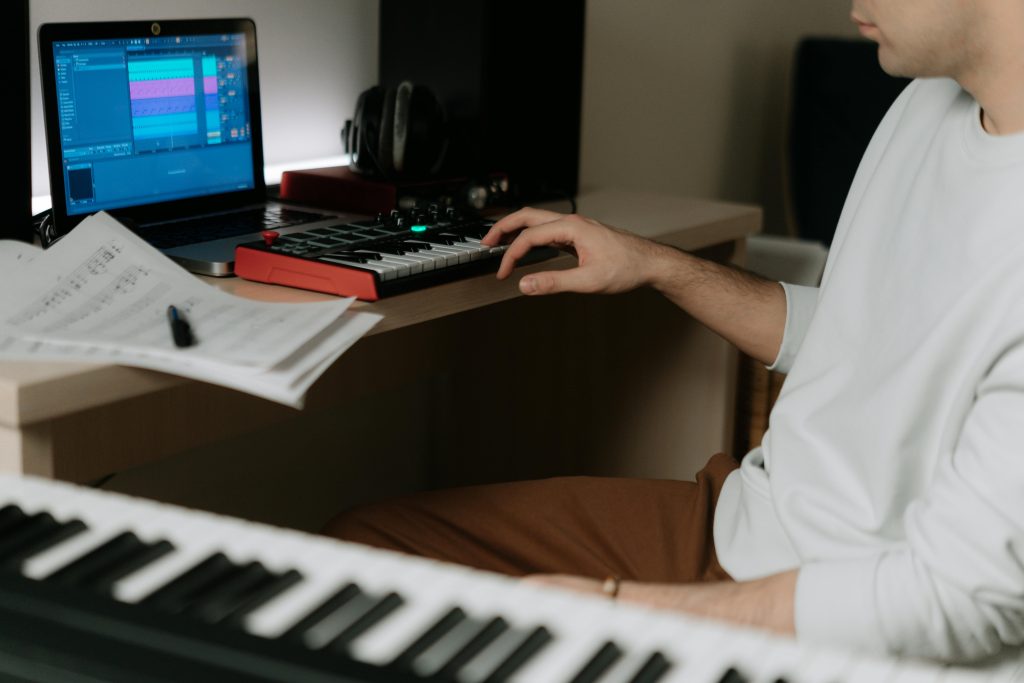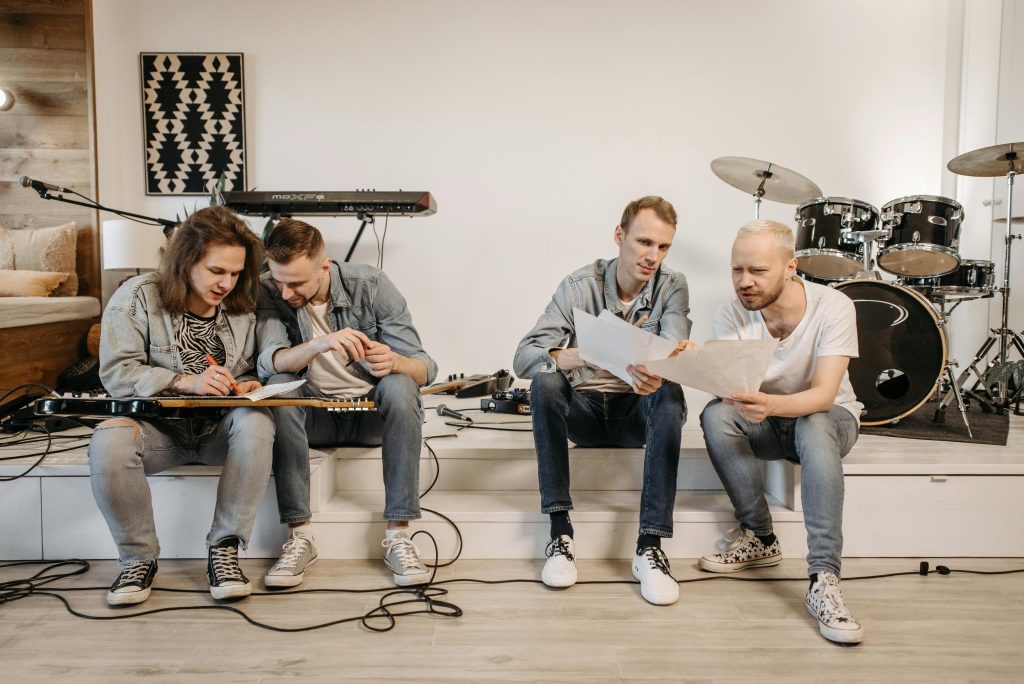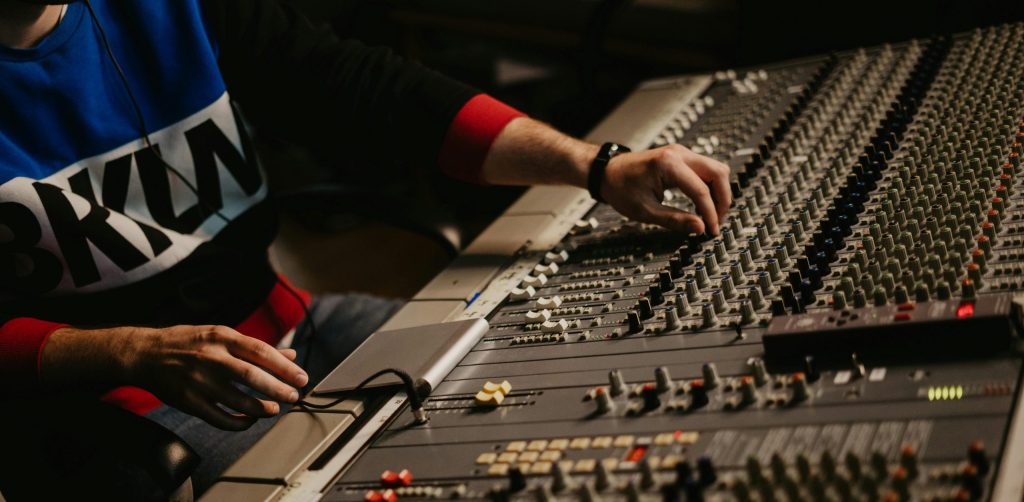Mastering Music Copyright: A Guide for Independent Artists to Secure and Monetize Your Creative Work

Diving into the world of music copyright can feel like navigating a maze for independent artists. But mastering this essential terrain is key to protecting your creative gems and scoring those royalties. In today’s digital landscape, where streaming and sync deals reign supreme, locking down your music rights through proper registration has never been more crucial.
This guide breaks down the essentials: types of copyright, royalty streams, and ownership splits—all crafted to equip you with the confidence to own and optimize your music rights. As a champion for artists, my mission is to arm you with the expertise and tools to shield your creations and boost your earnings in the ever-evolving music industry. Dive deeper into music copyright and licensing with this comprehensive guide.
Understanding Music Copyright
Let’s delve into music copyright. We’ll examine its various types, its significance for artists, and some practical scenarios you might face.
Types of Copyrights for Songs
There are two main types of copyrights in music: composition copyright and sound recording copyright.
Composition copyright protects the underlying musical work: the melody, lyrics, and structure of a song. It applies when you write a song, even if it’s not yet recorded.
Sound recording copyright protects the audio recording of a performance of the song. This is obtained when you record your song in a studio or on your phone.
These are separate rights and can be owned by different parties. For instance, you might own the composition copyright as the songwriter. A record label could own the sound recording copyright if they funded the recording session.
Importance of Copyright for Artists
Copyright is the foundation of an artist’s ability to control and monetize their work. It’s about more than stopping unauthorized use—it’s about enabling a sustainable career.
Copyright gives you the right to reproduce, distribute, perform, and create derivative works from your music. This means you can license your songs for use in films, TV shows, or commercials. This opens up significant revenue streams.
Moreover, copyright lets you collect royalties when your music is streamed, played on the radio, or performed live. Without proper copyright registration, you might miss out on these crucial income sources.
In the digital age, music can be shared globally in seconds. A solid grasp of copyright is more important than ever. It’s your shield against unauthorized use and your key to unlocking various monetization opportunities.
Real-Life Copyright Scenarios
Here are real-world scenarios to illustrate how copyright works:
Scenario 1: Cover Songs: Recording a cover of another artist’s song requires permission from the original songwriter (or the composition copyright owner). Mechanical royalties are typically paid for each copy sold or streamed.
Scenario 2: Sampling: Using a snippet of another artist’s recording requires clearing both composition and sound recording copyrights. This often involves negotiating with both the songwriter and the record label.
Scenario 3: Co-Writing: When multiple songwriters collaborate, they become co-owners of the copyright. It’s crucial to agree on ownership splits upfront to avoid disputes.
These scenarios highlight the importance of understanding copyright in various creative situations. For more detailed information, check out the U.S. Copyright Office’s guide for musicians.
Navigating Royalties
Understanding royalties is key to maximizing your income as an artist. Let’s break down the main types of royalties.
Mechanical Royalties Explained
Mechanical royalties are payments to songwriters and publishers for the reproduction of their compositions. This includes physical copies (like CDs) and digital downloads.
In the streaming era, mechanical royalties are more important. Each time your song is streamed on platforms like Spotify or Apple Music, it generates a small mechanical royalty.
These royalties are typically collected and distributed by Mechanical Rights Organizations (MROs). In the U.S., the Mechanical Licensing Collective (MLC) handles this for streaming services.
It’s worth noting that mechanical royalty rates are set by law in many countries, including the U.S. As of 2021, the rate is 9.1 cents per song for physical sales and downloads, or a percentage of revenue for streaming.
Performance Royalties Uncovered
Performance royalties are generated when your music is performed publicly. This includes radio play, live performances, and business use.
These royalties are collected and distributed by Performing Rights Organizations (PROs) like ASCAP, BMI, or SESAC in the U.S. As a songwriter, affiliate with a PRO to ensure you’re collecting these royalties.
Performance royalties can be a significant income source, especially if your music gets radio play or is performed live. Streaming services also pay performance royalties, in addition to mechanical royalties.
Both songwriters and publishers receive performance royalties, typically split 50/50. If you’re an independent artist without a publisher, you act as your own publisher and collect both shares.
Synchronization Royalties Demystified
Synchronization (or “sync”) royalties are generated when your music is used with visual media, such as films, TV shows, commercials, or video games.
Unlike mechanical and performance royalties, sync fees are negotiated directly between the copyright holder and the user. Rates vary based on factors like the song’s prominence, project budget, and artist popularity.
Sync deals usually involve an upfront fee and ongoing performance royalties. This can be lucrative, especially for independent artists.
Sync deals require clearance of both composition and sound recording copyrights. If you own both, you have a strong negotiation position. If not, coordinate with other rights holders.
For a more in-depth look at royalties in the digital streaming era, check out this article from Disco.
Registering Your Music
Proper registration is crucial for protecting your rights and ensuring you receive due royalties. Let’s explore where and how to register your music.
Essential Registration Sites
There are key organizations where you should register your music:
-
U.S. Copyright Office: The official body for copyright registration in the U.S. Registration provides additional legal protections.
-
Performing Rights Organizations (PROs): In the U.S., these are ASCAP, BMI, and SESAC. PRS for Music in the UK, SOCAN in Canada, APRA AMCOS in Australia, and GEMA in Germany collect performance royalties.
-
SoundExchange: Collects digital performance royalties for sound recordings played on non-interactive digital radio. In other regions, look for organizations like PPL in the UK or Re:Sound in Canada.
-
Harry Fox Agency (HFA) or The Mechanical Licensing Collective (MLC): Handle mechanical royalties in the U.S. MCPS in the UK, CMRRA in Canada, and AMPAL in Australia are equivalents.
-
Music Recognition Technology (MRT) databases: Services like Shazam and Gracenote help identify your music in play, aiding royalty collection. Consider platforms like YouTube Content ID.
Each serves a different purpose in protecting your rights and ensuring you receive royalties. For a comprehensive guide on copyright, check out this resource from CD Baby.
Step-by-Step Registration Guide
Here’s a basic guide to registering your music:
-
Register with the U.S. Copyright Office:
-
Visit copyright.gov and create an account.
-
Choose “Register a Work.”
-
Fill out the form with song details.
-
Pay the fee and submit your application.
-
Join a Performing Rights Organization (PRO):
-
Choose ASCAP, BMI, or SESAC.
-
Create an account and pay the membership fee.
-
Register each of your songs with the PRO.
-
Register with SoundExchange:
-
Create an account on soundexchange.com.
-
Provide your personal and tax information.
-
Register your recordings.
-
Sign up with The Mechanical Licensing Collective (MLC):
-
Create an account on themlc.com.
-
Provide song and recording information.
-
Set up payment information.
-
Submit to Music Recognition Technology databases:
-
Research submission processes for Shazam and Gracenote.
-
Provide required metadata and audio files.
This process can be time-consuming, but it’s crucial for your rights and royalties.
Common Registration Mistakes
When registering your music, avoid these pitfalls:
Incomplete or inaccurate information: Double-check details. Errors can lead to delays or lost royalties.
Failing to register all versions: Register each version of a song separately (radio edit, acoustic, remixes, etc.).
Neglecting to update registrations: Update registrations promptly if information changes (new collaborators, ownership splits).
Not registering internationally: If your music is global, register with international collection societies or use a service to handle this.
Overlooking metadata: Accurate metadata is crucial for tracking and royalty collection, especially in the digital age.
By avoiding these mistakes, you can ensure your music is protected and you’re set up to receive due royalties. For detailed information on copyright, check out this comprehensive guide.
Ownership and Splits
Understanding ownership and splits is crucial for managing music rights effectively. Let’s explore common ownership structures, negotiation strategies, and how to protect your rights.
Common Ownership Divisions
Music ownership generally splits into two main categories: composition and sound recording.
Composition Ownership:
-
Writing a song by yourself gives you 100% ownership. You call the shots.
-
Co-writing with others splits ownership based on contribution. For example, a 50/50 or 60/40 split.
-
Bringing in a publisher usually involves a 50/50 split between songwriter(s) and the publisher. This can expand reach but shares profits.
Sound Recording Ownership:
-
Independent artists typically get 100% of the cake if they do it all themselves.
-
Signing with a label might mean they own the master recording. This means they control the finished recording, but you still earn royalties.
-
In a production deal, there might be a split among artist, producer, and label, depending on contributions.
These splits can vary based on what you and your collaborators agree upon. Always nail down details in writing to avoid disputes.
Negotiating Ownership Shares
Clear communication is key when negotiating ownership shares. Here are some tips:
-
Discuss splits early in the creative process to avoid misunderstandings.
-
Consider each party’s contribution—not just in writing, but also in production and arrangement.
-
Be open to compromise, but know your worth.
-
Get everything in writing, even with friends.
There’s no one-size-fits-all approach to splits. What’s important is that all parties feel the division is fair and reflective.
Protecting Your Rights
Protecting your ownership rights involves more than just registration. Here are key steps:
-
Keep detailed records of your creative process, including dated drafts and demo recordings.
-
Use written agreements for collaborations, no matter how informal.
-
Regularly audit royalty statements to ensure you’re receiving what you’re owed.
-
Consider a music attorney for complex deals or disputes.
Your creative work has value. Stand up for your rights and seek professional help when needed.
Understanding and leveraging your copyrights can be a game-changer. Let’s explore ways to make the most of your music rights.
Streaming and Sync Placements
Maximizing your streaming and sync placements can significantly boost revenue streams. Here’s how:
Streaming:
-
Distribution: Make sure your music is on all major streaming platforms. A wider reach increases your listener base.
-
Playlist Curation: Engage with playlist curators or create your own playlists to promote your music. Playlists attract followers and increase play counts.
-
Audience Engagement: Regularly interact with fans through live streams, Q&A sessions, and social media discussions. Engaging content drives listeners to explore your streaming profiles.
-
Social Media Promotion: Use social platforms to highlight your streaming presence. Share links to new releases and encourage followers to listen and share.
Sync Placements:
-
Agency Collaboration: Partner with a sync agency or music library to pitch your music to film, TV, and commercial projects. This amplifies your chances of selection.
-
Instrumental Production: Create instrumental versions of your tracks. They’re more versatile for placements in various contexts.
-
Networking: Develop relationships with music supervisors, filmmakers, and ad agencies. Attend events, offer previews, and showcase tailored music for projects.
Song streams might seem small monetarily, but they accumulate over time. Sync placements can offer substantial one-time payments and recurring royalties, making them valuable for income.
Leveraging Copyright Knowledge
A strong grasp of copyrights isn’t just a safeguard—it’s an empowering asset. Here’s how to maximize this knowledge:
-
Explore Licensing Opportunities: Use rights knowledge to license music in ads, video games, or indie films. Licensing connects creativity with a larger narrative and provides a steady income stream.
-
Create Multiple Versions: Your music is versatile. Create different versions—acoustic, instrumental, or remixed—to expand your catalog and appeal to different uses.
-
Direct Licensing Deals: Reach out directly to businesses or platforms that could benefit from your sound. Direct deals let you negotiate terms that suit both parties.
Understanding your rights allows you to find innovative ways to monetize music beyond albums or streams. This strengthens your financial footing and makes your creative journey rewarding.
Building a Sustainable Music Career
Harnessing copyright knowledge is crucial for a lasting music career. Here are tips to guide you:
-
Diversify Your Income Streams: Explore multiple revenue channels instead of relying on one. This includes streaming, sync placements, merchandise, and live shows.
-
Invest in Your Education: Stay updated on industry trends and copyright laws. This knowledge empowers informed decisions as the music landscape evolves.
-
Build a Team: As your career expands, consider collaborating with a lawyer, accountant, or manager. Experts streamline operations and enhance business acumen.
-
Plan for the Long Term: Strategize to increase your music catalog’s value over time. Explore new markets or re-release classic tracks.
Success in the music industry blends creativity, business acumen, and persistence. Understanding and leveraging copyrights paves the way for enduring success.
Conclusion
Understanding music copyright is vital for independent singer/songwriters. It helps protect your rights and maximize income. This guide shows how copyright impacts control, monetization, and safeguarding from unauthorized use. In the complex digital landscape, grasping copyright nuances empowers you to navigate royalty streams, ownership disputes, and licensing confidently.
Familiarize yourself with copyright types, registration requirements, and metadata’s importance. You’re not just protecting your art—you’re securing your future. This knowledge enables tapping into revenue sources like streaming, sync placements, and live performances effectively. Understanding music copyright isn’t just about legal compliance; it’s about leveraging your artistic identity, ensuring your music reaches the right ears, and building a sustainable career.
Share this blog
Related Blogs
-
Josh Reid










